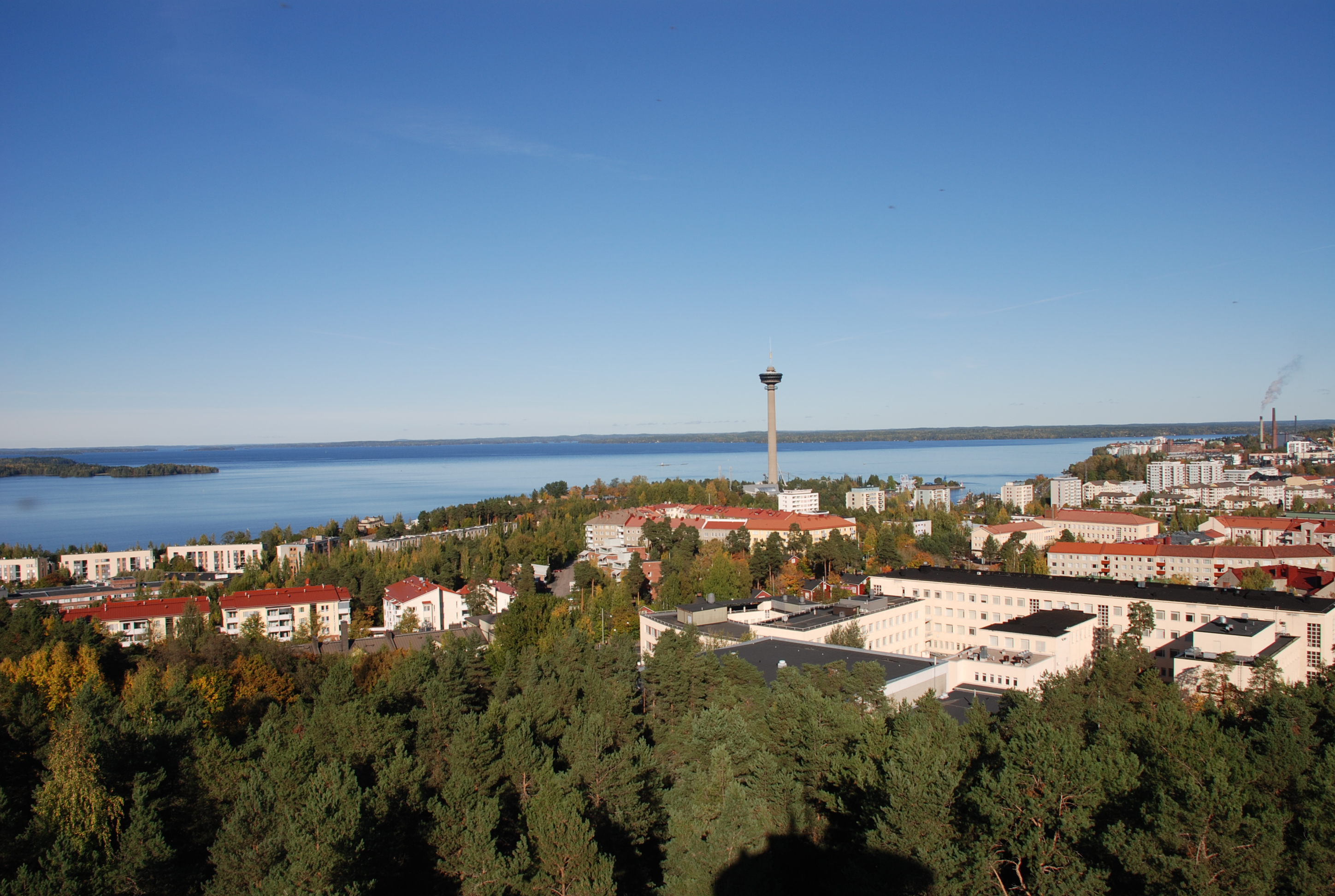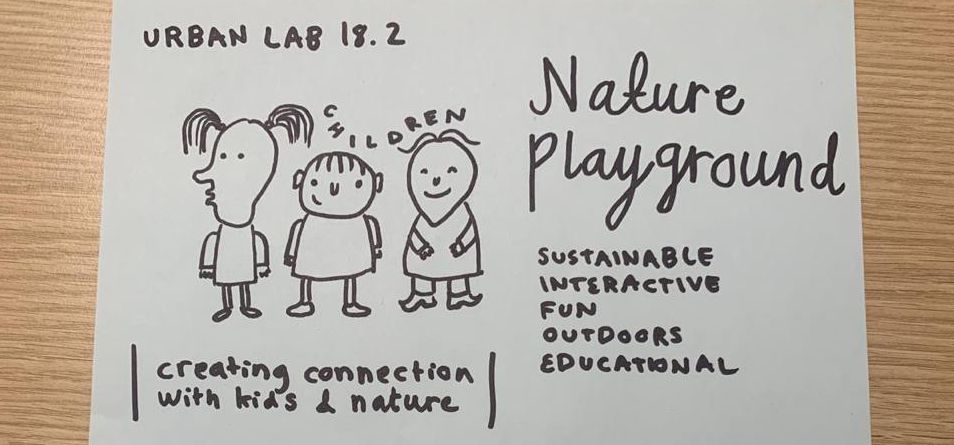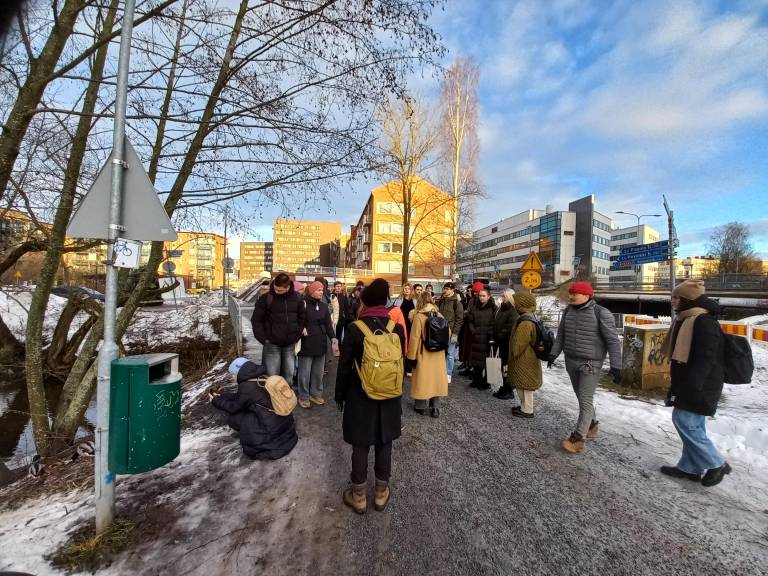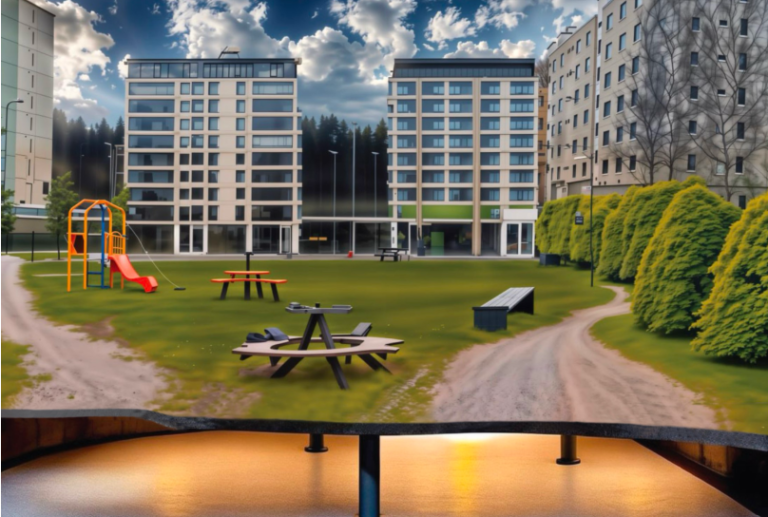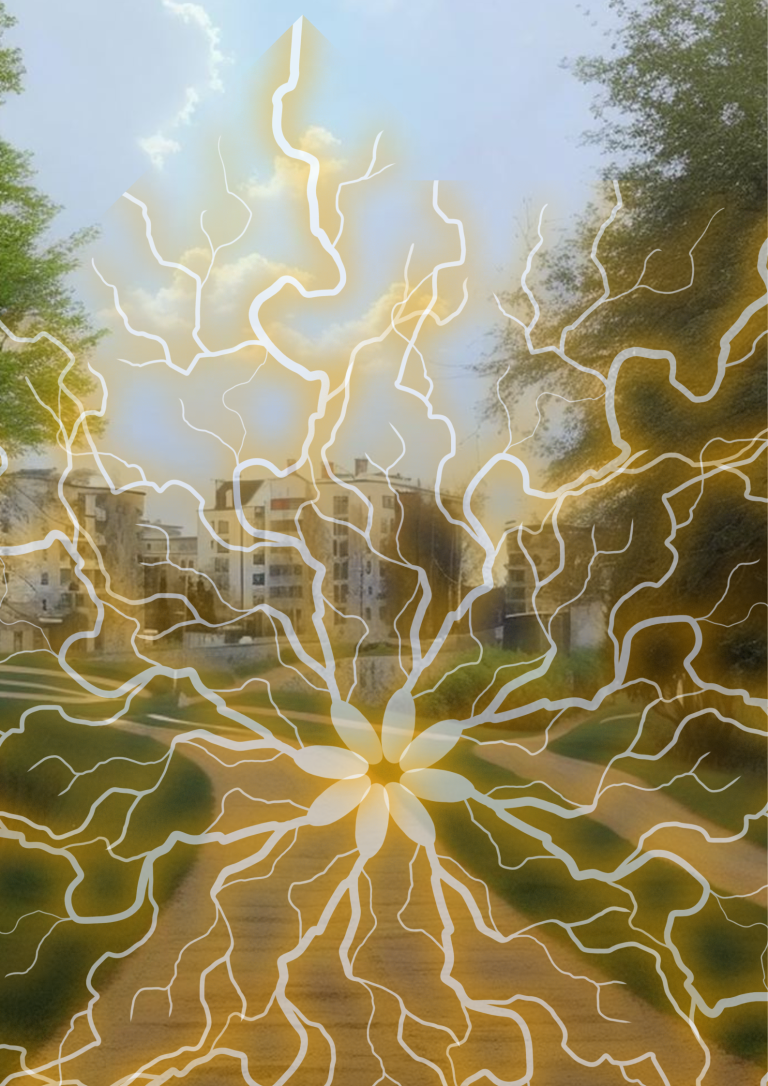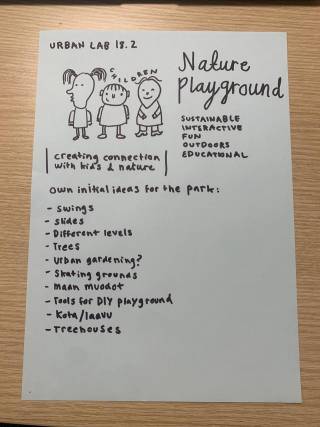
Our project was kicked off with a very free brainstorming. We went off from one given question that asked what challenge we are thinking to investigate and why. For about five minutes we wrote down on a collective document anything and everything that came to mind. Our group gathered things on the list such as climate resilience, mobility, community gardening, conservation of the Industrial look of Hiedanranta, nature playground and a sustainable recycling system.
As a result of the brainstorming, initially our group got interested with making some kind of communal space where the culture and look of current Hiedanranta would be preserved. For this we found benchmark cases such as Teurastamo in Helsinki and Birmingham in England. However, something else in the list seemed to intrigue our interest, the idea of a nature playground. We thought: Could we combine community space and a children’s playground somehow? (Spoiler: Yes we could).
We decided to start researching for this nature playground idea. We created a schedule and a plan for who researches what. Fanni was responsible for finding pedagogical and psychological evidence on the effect of natural environment on children. I was in charge of finding benchmark cases for our project and Shamsur looked into the masterplan of Hiedanranta, where our project could be implemented and other more technical aspects to take into consideration. This research part was done on our own time so that everybody could focus on making good findings and later share the most important ones with the group.
Next time we met up, we had a lot of research and ideas that we could easily start bouncing of off. The next step would have been to start writing a literature review of these findings. However, we saw that because we would have to pitch this idea very soon, we should focus on gathering the idea into a presentation form. This turned out to be a good idea, because we would have to separate the most important findings from the rest and simplify the project concept to the level that it could be presented as a short pitch. Here Takapiha was really born: An idea of an adventure park for children where the environment molds through play. Children are offered different tools and materials that they can use how they best see fit. The idea is that no one is there to limit or break the flow of the play, rather encourage children to guide themselves, learn and use their imagination. We backed up the need for this new kind of adventure park by presenting research findings on for example the effect of nature to children’s learning and children’s need for less restricted play and more challenge. We also introduced the practical aspects of Takapiha as well as a possible location for it, which is the back space of the old plastic factory in Hiedanranta. For a sense of community, Takapiha is open to everyone and there is a Kota as a place to gather and meet old and new acquaintances.
The day of the pitch came and one could sense bit of nervousness in the air since there was a large and important audience to listen to our ideas. However, we had practiced our pitch plenty of times, the concept was clear for the whole group and we were quite happy with the visuals of the presentation. The pitch went well, we were pleasantly surprised how much discussion our idea prompted and how many comments we got that helped us to develop our idea further.
The literature review that was meant to be a base for helping to develop our idea and presentation was now to be done after hand, which was actually quite easy to do. During the process of writing it, we found some more interesting cases similar to Takapiha. This made us more confident that since it has worked in other parts of the world, therefore it could also work here in Hiedanranta.
After submitting our literature review, what was last to do was to create a grand poster about our project. This our group felt was possibly the most fun part of the project, because it required some visual eye and we needed to use our creativity and imagination to make it interesting and eye catching. The project posters were going to be printed on a large paper and displayed for tens of people from the urban planning field to see, therefore it was very helpful that we got to showcase them for a smaller audience first. The audience consisted of our teachers and attendees from Sammon Keskuslukio skateboarding class, whose tips and comments helped us to finalize our poster’s contents and visual look before it went to the press.
And finally there it was a couple days later, Takapiha, free play adventure park concept ready for the eyes of the world. This course was truly a special opportunity to play with creativity and problem solving as well as getting touch with actual stakeholders in Tampere and its current developing environment.
Ellen Heinaro
This text has been written as part of a series of blogs by the SUD students, where they reflect on their experiences working together – and with people outside of the university – to develop their ideas for the Urban Lab. Click here to view the posters made by SUD students in Urban Lab 1.

